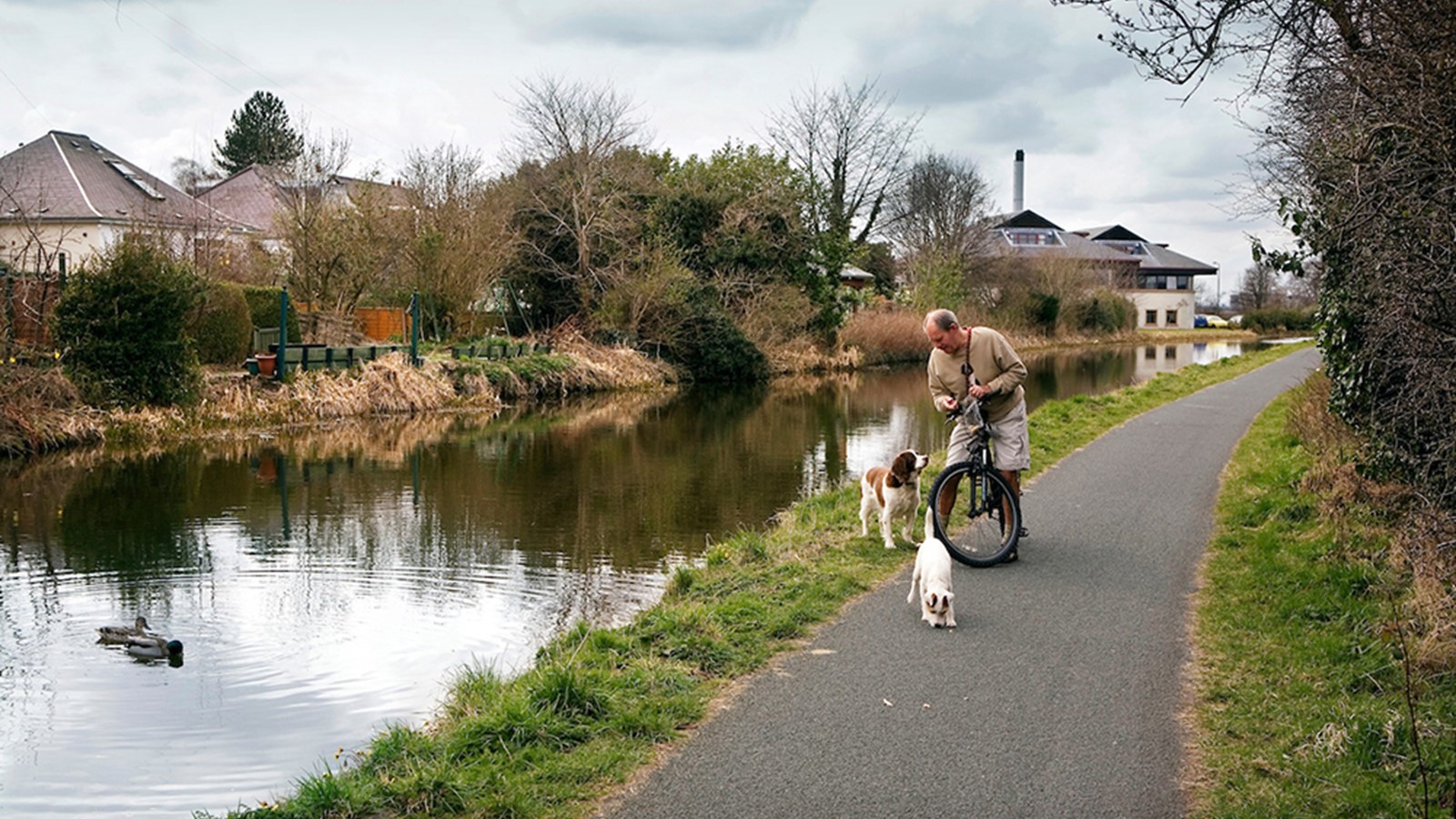Union Canal Towpath Study
The Union Canal corridor has the opportunity to provide a high quality green, traffic free and safe route for all users. The challenge is to ensure the route meets this expectation while balancing the needs and desires of the various users.
- Year
- 2017
- Location
- Edinburgh
- Category
- Green/blue Infrastructure, Play and leisure
- Client
- Scottish Canals
- Value
- undisclosed
- Size
- Length of Towpath 16km
The Vision
The Union Canal towpath Study aims to improve the usability of the towpath along the Union Canal starting at Lochrin Basin in Central Edinburgh to the Almond Aqueduct in the West. The towpath surface has been upgraded over the years. The feasibility study outlines a need for further enhancements, including towpath widening, access improvements, alternative route opportunities, and behavior strategies. The objectives are to improve the usability of the towpath to meet the requirements of the increased number of users.
Thanks to funding from Sustrans Scotland, Scottish Canals appointed HarrisonStevens along with a comprehensive consultant team, to carry out a study to identify opportunities to improve the towpath.
More than just a Heritage Asset
The Union Canal Towpath boasts a rich history and significant cultural context, it also provides an important route linking the urban fringe of Edinburgh, in to the city centre with a substantial change in landscape, context and scale as the Union Canal progresses from Lochrin Basin to the Almond Aqueduct.
The canal runs for 16 km between and through the communities of Ratho, Wester Hailes, Longstone, Craiglockhart, Merchiston, Polwarth and Tollcross, terminating at Fountainbridge in the city centre. It passes Harrison Park, Meggetland and Hailes Park, and crosses over the Water of Leith via the 180 m long Slateford Aqueduct. The Union Canal, a scheduled monument is not just a heritage asset for Edinburgh, but also a navigable waterway for boating, an important wildlife habitat, a walking, jogging and cycling route, and a focus for new canal side development and local community use.
Focused Engagement
A variety of methods were used for collecting data and information about the current use of the canal, as well as conflicts which need to be mitigated. This included conducting walkshops, extensive desktop research, community consultations, as well as two Ideas workshops with local stakeholders and the general public. The key findings were presented at the Edinburgh Canal Festival in June 2017, with the aim of acquiring further input from users before finalising the study at the end of June.
The primary aim of the study was to identify strategies to ease congestion and resolve issues occurring amongst Union Canal towpath users. The discussions thus far have identified the following key issues and suggested improvements; towpath widening, solutions for bridge holes, code of conduct, alternative routes, improved accessibility, connection onto wider city cycle networks, wayfinding and signage as well as placemaking along the towpath. These points were subsequently addressed as part of the study report.
The Process
The Ideas workshop was an effective way of gaining insight into key areas of canal user interests as well as acquiring input and involvement from the local community and stakeholders of the Union Canal towpath. The workshop was split into two sessions, which stakeholders could attend and take part in several discussions and explore issues and ideas surrounding the use of the canal towpath.
Daytime Walkshop
While walking along the towpath, the team took notes and photographs, discussed points of interest and highlighted opportunities for improvement as they arose. Key points discussed included, the width of the towpath, desired routes (routes in the grass and through hedgerows), options for alternative routes and general access improvement, as well as opportunities for further improvement such as placemaking and wayfinding along the towpath. The width of the towpath was noted as a key issue, along with the possibility of guiding cyclists along alternative, off-road routes (quiet routes) to ease the pressure on the towpath.
Night Time Walkshop
At the Night Time walkshop, the project team took photographs and illuminance readings periodically along the route. Observations of the characteristics of light were noted and LUX (the level of brightness) was measured the along the towpath from Meggetland to Lochrin Basin. A significant contrast was observed between the lighting level on the general towpath and at the bridge holes, as well as the blinding of pedestrians caused by front mounted lights on passing cyclists.
Improvement Strategies and Opportunities
The feedback and information gathered from the research, consultations, and stakeholder correspondence thus far has been recorded, collated and analysed to develop a series of key findings. These key findings have influenced a series of design strategies which will form the future improvement projects, design proposals and funding applications for the improvement of the Union Canal towpath.
The Report and Next Steps
The delivery for the study was an extensive report, which was shared with the public via the Scottish Canals web site:
https://www.scottishcanals.co.uk/placemaking/edinburghs-union-canal-towpath-study/
The report documented the research, findings and suggested improvement strategies with costing to be taken forward by Scottish Canals and used as the foundation for future project descriptions and funding applications.
As a suggestion for a next step for the towpath improvement strategies, a Test Area was suggested from Harrison Park East to Meggetland where an opportunity to test many of the improvement strategies was identified. The aim for the Test Area will be to study and evaluate the strategies effect on the use of the towpath before investing and implementing them along the entire stretch of the towpath. Analysing at cycling speeds, the perception of safety, behavioral improvements and user numbers. In the future, if funding becomes available, Scottish Canals will look to implement the towpath improvement strategies, and as such, this study will be considered as part of the wider improvement project.












